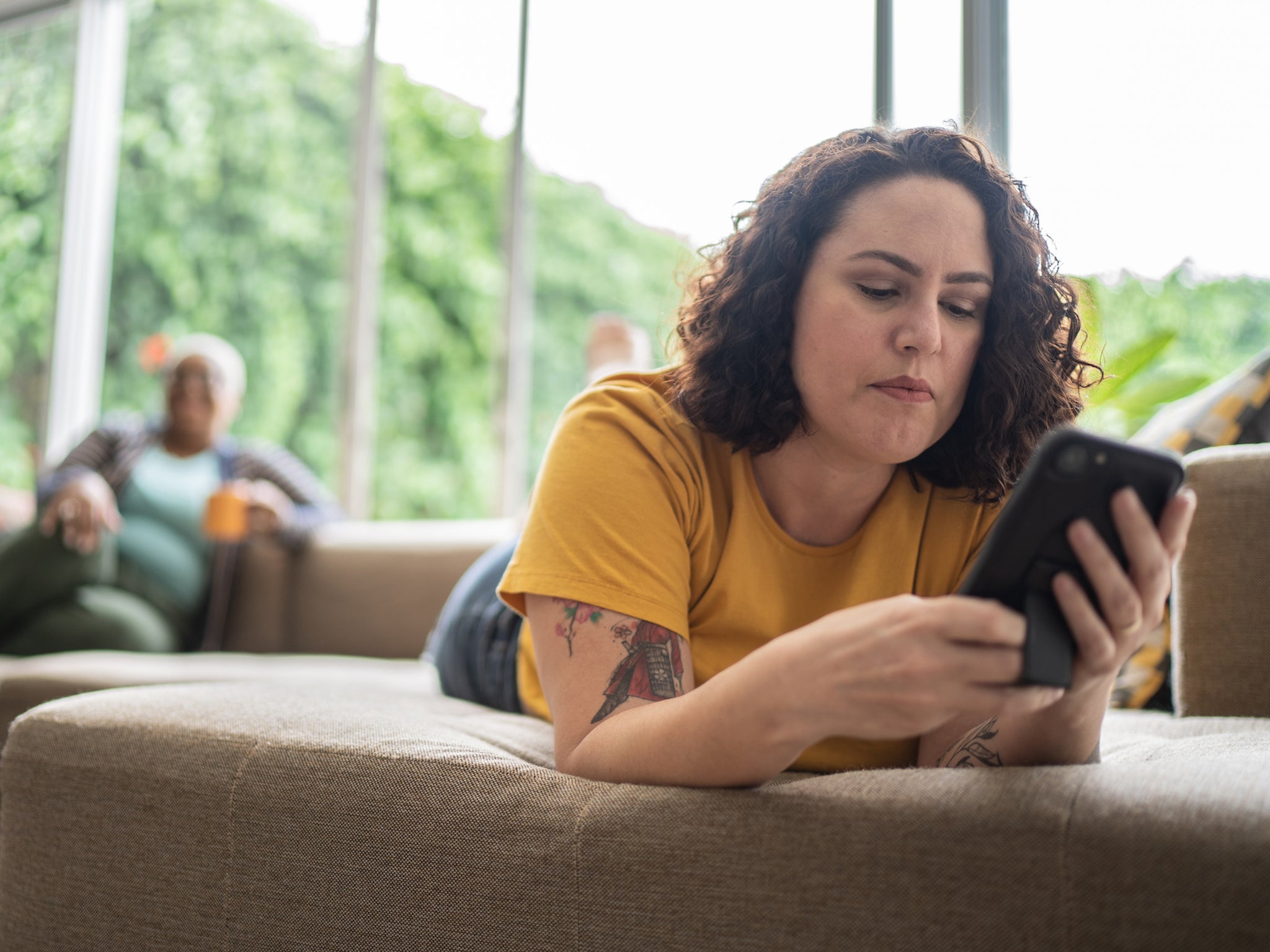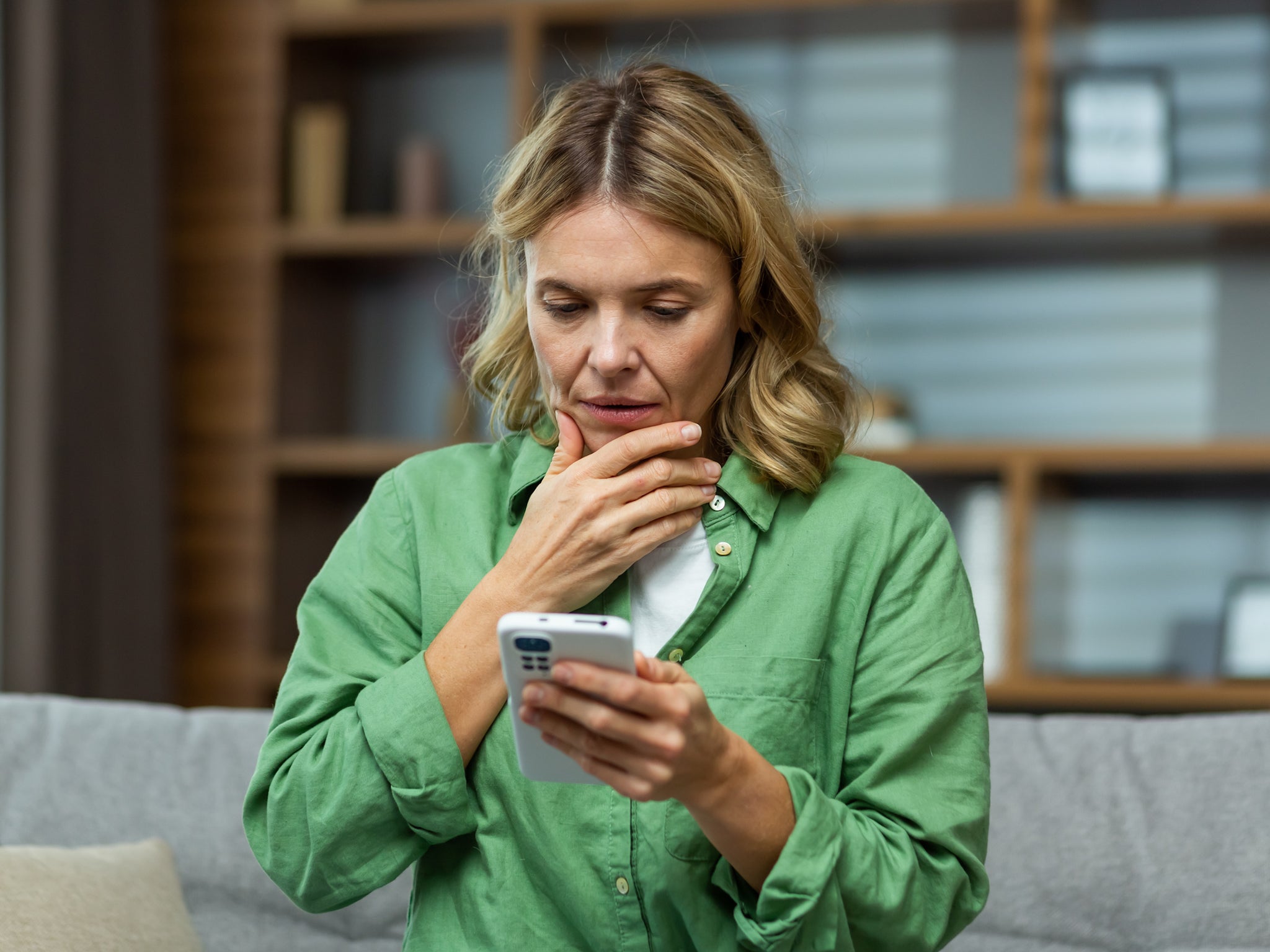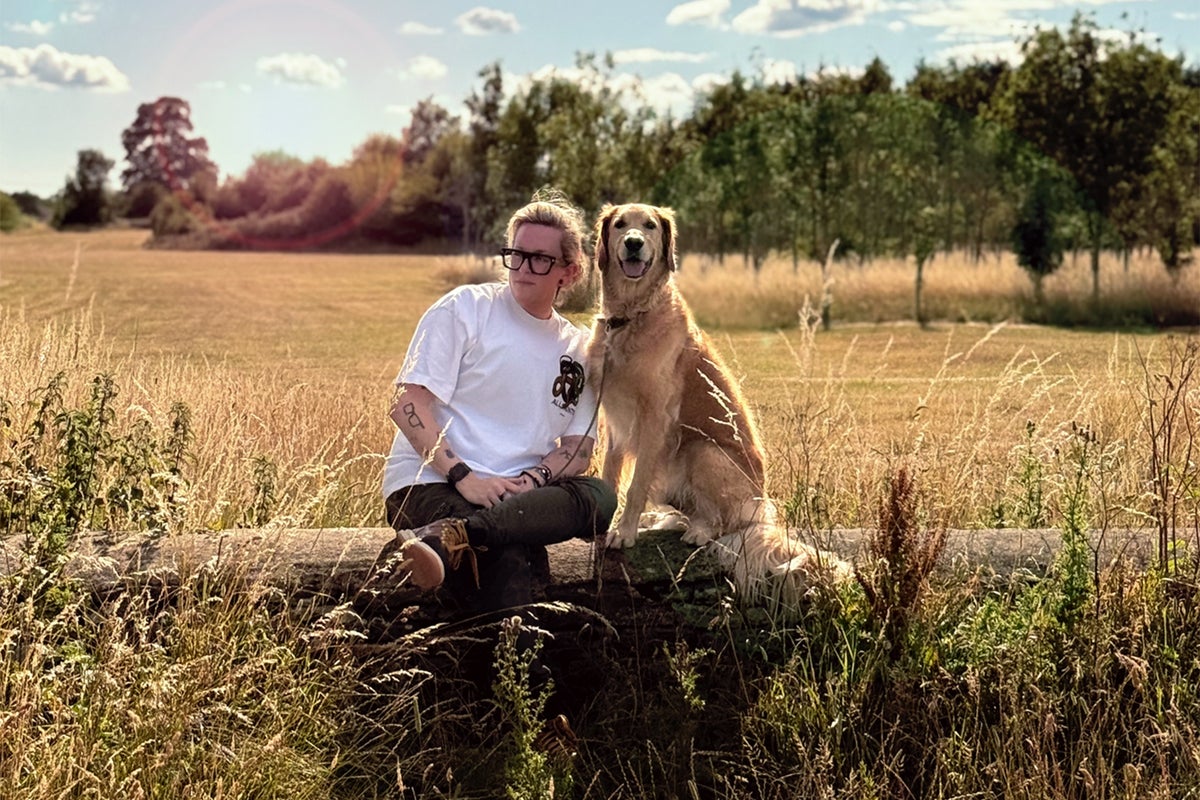Multiple times a day, during my designated scrolling time on TikTok (I try to keep this habit in check), voices echo out of my phone, all telling me what they’ve eaten that day. It’s a viral social media trend and the videos are everywhere.
“What I eat in a day as a fat 20-year-old who doesn’t diet”, “what I eat in a day as a guy who can eat whatever he wants without putting on weight”, “what I eat in a day as a woman with PCOS”, “what I eat in a day as a girl trying to heal her skin through diet”, “what I eat in a day as a twenty-three-year-old on Ozempic”, “what I eat in a day as a mum trying her best”.
The videos are varied. Some obsessively healthy featuring only organic foods, others showing three takeaways or nothing but chips. I watch them, engaged and obsessive – even when I know they’re probably harming my relationship with food.
I rarely give anything on my phone my full attention, but these videos always reel me in. I don’t want to look, but I do. And even after blocking or unfollowing the creators who particularly spike my anxiety, these videos are inescapable. The hashtag #whatieatinaday (or #WIEIAD) has billions of views, and currently 2.3M posts attached to it on TikTok.
Feeding the algorithm
The format is easily replicable, low-effort and wildly popular, so creators of all niches seem to have jumped on the trend. Sometimes, especially from foodie accounts, these videos can feel useful, introducing me to new recipes or cooking styles. But more often than not, I come away from my time on TikTok with a creeping sense of discomfort.
As a genre, these videos make food more of a public performance than ever before. In many ways, they’re a modern reboot of the early 2000s “what’s in my fridge?” features in magazines, but repackaged for the TikTok generation.
The trouble is, while food can be about community and connection, WIEIAD videos often do the opposite. They invite surveillance and judgment. I’ve caught myself watching and mentally calculating if someone’s eating too much or too little or how many vegetables are on their plate. I hate that I do this, and it goes against everything I believe in. But even those actively unlearning diet culture internalise the dangerous messaging about what we should or shouldn’t be eating.
This is the baked-in hypocrisy of habitual WIEIAD viewing – we become the food police, even if we don’t want to. And that policing, by ourselves and others, damages our relationships with eating.
Social media thrives on comparison. Now more than ever, young people have access to the interior, curated lives of others, and they compare themselves constantly. That includes the food they’re eating. What one influencer eats might not be replicable for a follower with a different body, income level, or cultural background, but the pressure to conform still exists.
Read more: How politics, ultra-processed food and toxic masculinity are killing the Mediterranean diet
Embedded in diet culture
Personal trainer and functional mobility specialist Laura Ghiacy reacts to WIEIAD videos by breaking down toxic language, debunking myths and calling out weight-loss rhetoric. She knows the problem with comparison all too well. “I started dieting when I was just 8 years old, and that spiralled into decades of disordered eating and obsessive food control,” she explains. “So when social media first took off and ‘what I eat in a day’ videos exploded in popularity, I was hooked. I watched them religiously, copied them meal for meal, and truly believed that if I just followed what these influencers ate, I’d finally look like them, finally be enough.”
Ghiacy told me that she creates these reaction videos to help people avoid diet culture traps. “I know my experience is on the extreme end of the spectrum, but that’s exactly why I create these reactions. If I can help just one person question what they’re seeing, stop comparing, or avoid going down the same path I did, then it’s worth it. My goal is to cut through the noise and expose the problematic messages so many people don’t even realise they’re absorbing.”
According to 2023 data from Statista, 63% of TikTok users are between the ages of 18 and 34. This overlaps with the age group most vulnerable to developing eating disorders. In fact, a 2020 study found a significant link between social media use and disordered eating among middle school students, suggesting that the impact begins far earlier than previously thought.
I asked Dr Charlotte Markey, a world-leading expert in body image research and author of The Body Image Books, for her viewpoint. “WIEIAD videos are problematic,” she told me. “Our food choices are driven by a variety of forces – appetites, cultures, resources, activity levels – and so much more. Two people can consume the exact same foods and have very different bodies.”

What’s particularly dangerous is that young viewers tend to absorb what they see without critical thinking. “The part of our brains (the prefrontal cortex) that allows us to think in more critical, abstract ways doesn’t fully develop until we are in our twenties. In contrast, the more emotion-focused areas of our brain develop sooner, which leaves the images, music, and excitement of quick video clips particularly enticing to young viewers. They are less apt to pause and think analytically about what they are seeing than are older viewers,” she adds.
There’s also the issue of privilege. A lot of popular WIEIAD content is created by people with access to time, money and fresh produce. For many, replicating those meals is nearly impossible, not just financially but logistically. This further reinforces comparison culture, but also mirrors real-world snobbery around food and society’s demonisation of working class people and the choices they make.
Intent versus impact is important when considering these videos. Even videos posted with good intentions, like those “normalising” non-restrictive eating or home-grown produce, can still be damaging when viewed through a comparative lens.
And it’s not just teenagers posting and consuming this content. I’m thirty, and I still feel the internal tug-of-war. I’m a grown woman, well-versed in the tricks and tropes of wellness and diet culture, and still, I sometimes feel inadequate. So, it’s easy to assume that young people do too.
Read more: Half a cup of sugar a day? Scientists take on the latest controversial health trend
Can these videos ever be helpful?
Functional medicine practitioner Farzanah Nasse focuses on gut and hormone health and creates her own WIEIAD videos with a very specific goal. “I create these videos to try and inspire my audience on ways to incorporate more goodness” she tells me.
“We know that up to 90 per cent of the UK population are not meeting their fibre goals and in all my videos I show how I can hit this, easily. I share ideas and simple recipes to help them too. It can be a visual way to encourage more plants and fibre. It’s also really important to remember we are all individuals and our needs and requirements vary considerably and so these videos need to highlight this and that they are simply there for ideas and inspiration.”
Nasse believes the issue isn’t the format, it’s creator specific. “Firstly, I think it’s important to know the background of the influencer that you are following. Are they a medical doctor, registered nutritionist or dietician and are they credible?”
Nasse hasn’t seen her clients bring up her WIEIAD videos when discussing body image, but clients do cite them as sources of inspiration or education: “clients say that they found it helpful to see how I used an ingredient or how they tried a particular recipe or learnt a new fact about what the science says.”
Ghiacy agrees, and says she finds some of these videos “refreshing”. She has seen WIEIAD videos that celebrate food, showcase cultural diversity and promote joy, nourishment, and the reality that thinness is not the same thing as health. She believes that this kind of content is “powerful and important”.
Nasse believes those making WIEIAD videos have to be very careful, and highlight that they are just examples to inspire. “Some influencers who have no credentials in health and wellness have shared videos with very low calories, demonising ingredients and promoting unachievable and unrealistic lifestyle habits that you absolutely do have to be careful and aware about. On the flip side we can use these videos as a tool to help and inspire others, helping them get more goodness into their diet, showing how simple swaps and changes can have a big impact.”

The toxic load
This all points to a bigger issue with social media wellness trends: it’s easy for health misinformation to thrive. “Even if WIEIAD videos are not mentioned directly, many young people in particular get ideas about health and nutrition from social media,” highlights Dr Markey. “Often this information is taken as fact when it is not at all evidence-based information. Anyone can suggest health information online, facts can be distorted, research misinterpreted and disinformation is presented with the aim of selling health-related products.”
WIEIAD videos often reflect deeper cultural anxieties about health, beauty and control. They are a window into our food culture’s extremes – from “clean girl” smoothies and supplements to fast-food-only diets. These videos thrive in the extremes and the really viral ones often don’t feel realistic or resemble how anyone I know in real life eats. Although they wouldn’t admit it, a lot of infamous WIEIAD creators are trying to rage bait audiences for views, whether that’s through spreading misinformation or pretending to eat differently on camera than they do in reality.
Ghiacy warns that the language of diet culture is “incredibly loaded,” pointing to seemingly harmless phrases like “clean eating,” “being good,” or having a “cheat day” as examples that “attach morality to food and by extension, to the people eating it.”
This moral framing, she explains, can have a powerful impact. “When someone labels their food as ‘clean’ and it looks nothing like what you eat, it’s easy to internalise that and start feeling like you need to change your habits to be a ‘better’ person.” Over time, she says, this reinforces the idea that “our worth is tied to what we eat” – a message perpetuated across social media, films and even everyday conversations.
Read more: How to improve gut health with food, according to experts
This dynamic, she adds, is especially evident in the wave of WIEIAD videos. “Whether it’s the creator labelling their meals or the comments praising someone for not eating certain things, we start to build our identities around those patterns,” Ghiacy says. “And that can be incredibly damaging, especially for young or vulnerable people trying to figure out who they are and where they belong.”
Of course, there are creators, like Nasse and Ghiacy, who are providing educational content via the WIEIAD trend. And there have been times where I’ve turned to Doctors or nutritionists online, to learn more about what I should eat. For example, I have Polycystic Ovary Syndrome (PCOS), which requires me to focus on certain foods more than others – watching other people with PCOS, or medical experts, demonstrate how they cook with the condition is useful and at times, inspiring.
But it’s also essential to maintain perspective, something that a lot of social media users don’t do, or are too young to know how to do. Just because someone with a similar diagnosis eats a certain way doesn’t mean their approach will work for you. These videos should never replace proper medical advice or nutritional support.
So what’s the answer? I don’t think we can, or should, ban these videos altogether. Like all content genres, they exist on a spectrum. But we need to be more conscious about how we consume them. And those creating them need to be held to higher regulatory standards.
Read more: The best supplements to take, according to experts



.png?trim=0,0,0,0&width=1200&height=800&crop=1200:800)